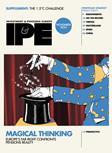UK - The UK Pensions Regulator (TPR) has acknowledged the launch of automatic enrolment still faces a number of hurdles, with only a third of employers aware of the upcoming reforms.
In its annual report, the regulator said it was "encouraged" by the level of awareness among large employers, which will be the first group subjected to the reforms, but it said there was still "substantial" hurdles ahead.
"Employers' awareness of workplace pensions reform was measured at 33%, while intermediaries' awareness of workplace pensions reform was measured at 77%," the report said.
It said it was encouraged by these levels, while recognising there was "substantial work to be done" in the area of small and medium-sized enterprises (SMEs).
The regulator's chief executive Bill Galvin said its work with employers would run in parallel to placing a greater emphasis on the defined contribution (DC) market, with the aim of guaranteeing products that had members' best interest at heart.
"The quality of DC products is critical to the success of the government's pensions reform, and segments of the market have some way to go in this regard," he added.
The regulator also saw its approval rating inside the industry slip marginally, with 88%, down by 3 percentage points over the past two years, ranking it as a trusted source for information.
Additionally, only 61% said they understood clearly how the regulator had reached certain decisions, a 4 percentage point slump over 2009.
However, PwC praised the increased use of contingent assets among underfunded pension schemes that was reflected in the report.
Four years ago, contingent assets were only involved in 21 transactions. However, last year saw more than 320 deals completed, with TPR saying this marked a 16% increase of Pension Protection Fund-approved contingent assets in the past year.
Brian Peters, pensions partner at the consultancy, said the method had gone from being virtually unknown to a "widely accepted alternative".
"In some ways, there has been little choice - reduced corporate liquidity has made it difficult for firms to meet increasingly tough funding targets," Peters said.
"We expect the trend to continue while cash is under strain. While property is the most common asset used, anything that has a tangible value can theoretically be involved."












No comments yet